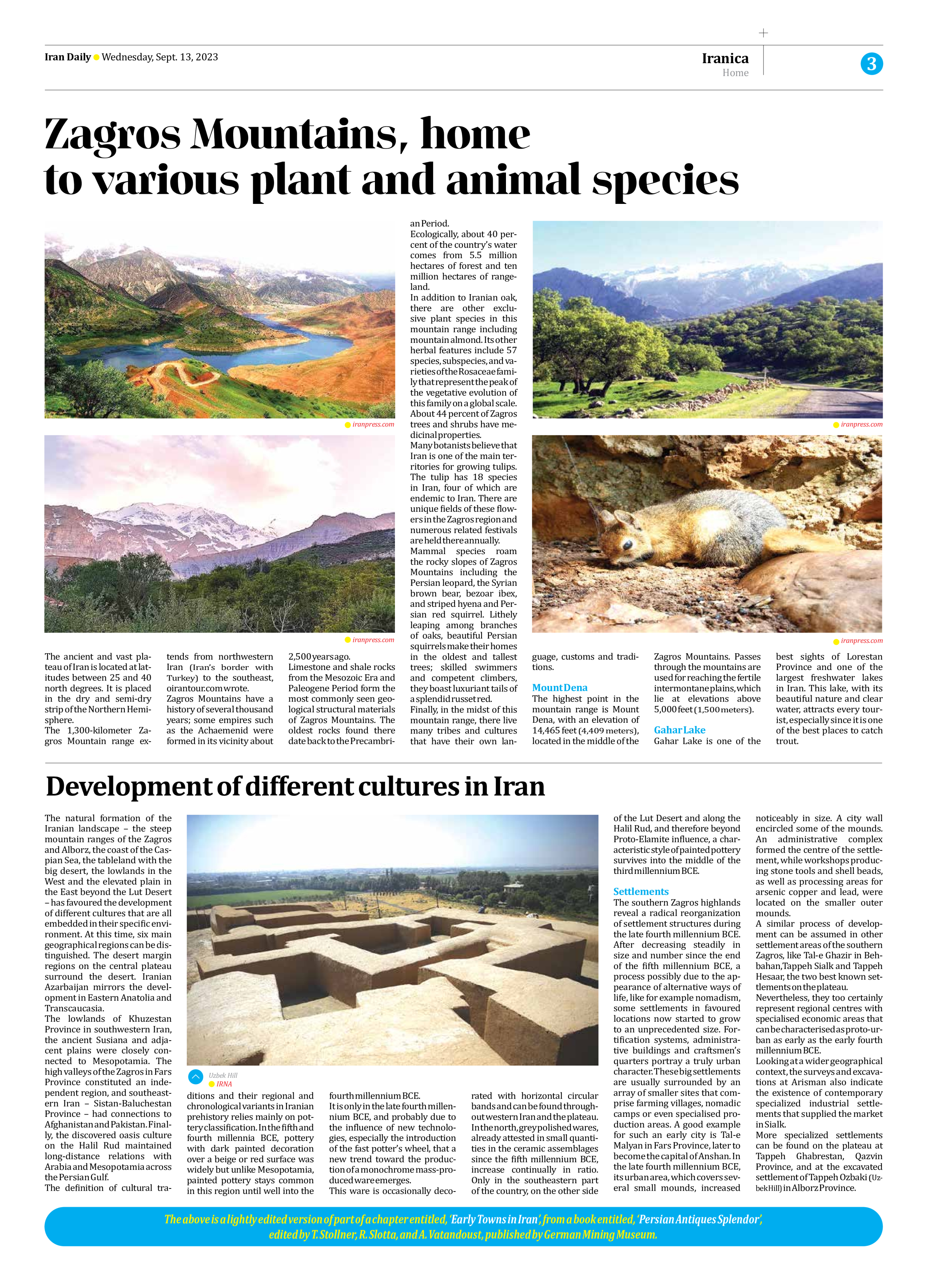
Development of different cultures in Iran
The natural formation of the Iranian landscape – the steep mountain ranges of the Zagros and Alborz, the coast of the Caspian Sea, the tableland with the big desert, the lowlands in the West and the elevated plain in the East beyond the Lut Desert – has favoured the development of different cultures that are all embedded in their specific environment. At this time, six main geographical regions can be distinguished. The desert margin regions on the central plateau surround the desert. Iranian Azarbaijan mirrors the development in Eastern Anatolia and Transcaucasia.
The lowlands of Khuzestan Province in southwestern Iran, the ancient Susiana and adjacent plains were closely connected to Mesopotamia. The high valleys of the Zagros in Fars Province constituted an independent region, and southeastern Iran – Sistan-Baluchestan Province – had connections to Afghanistan and Pakistan. Finally, the discovered oasis culture on the Halil Rud maintained long-distance relations with Arabia and Mesopotamia across the Persian Gulf.
The definition of cultural traditions and their regional and chronological variants in Iranian prehistory relies mainly on pottery classification. In the fifth and fourth millennia BCE, pottery with dark painted decoration over a beige or red surface was widely but unlike Mesopotamia, painted pottery stays common in this region until well into the fourth millennium BCE.
It is only in the late fourth millennium BCE, and probably due to the influence of new technologies, especially the introduction of the fast potter’s wheel, that a new trend toward the production of a monochrome mass-produced ware emerges.
This ware is occasionally decorated with horizontal circular bands and can be found throughout western Iran and the plateau. In the north, grey polished wares, already attested in small quantities in the ceramic assemblages since the fifth millennium BCE, increase continually in ratio. Only in the southeastern part of the country, on the other side of the Lut Desert and along the Halil Rud, and therefore beyond Proto-Elamite influence, a characteristic style of painted pottery survives into the middle of the third millennium BCE.
Settlements
The southern Zagros highlands reveal a radical reorganization of settlement structures during the late fourth millennium BCE. After decreasing steadily in size and number since the end of the fifth millennium BCE, a process possibly due to the appearance of alternative ways of life, like for example nomadism, some settlements in favoured locations now started to grow to an unprecedented size. Fortification systems, administrative buildings and craftsmen’s quarters portray a truly urban character. These big settlements are usually surrounded by an array of smaller sites that comprise farming villages, nomadic camps or even specialised production areas. A good example for such an early city is Tal-e Malyan in Fars Province, later to become the capital of Anshan. In the late fourth millennium BCE, its urban area, which covers several small mounds, increased noticeably in size. A city wall encircled some of the mounds. An administrative complex formed the centre of the settlement, while workshops producing stone tools and shell beads, as well as processing areas for arsenic copper and lead, were located on the smaller outer mounds.
A similar process of development can be assumed in other settlement areas of the southern Zagros, like Tal-e Ghazir in Behbahan,Tappeh Sialk and Tappeh Hesaar, the two best known settlements on the plateau.
Nevertheless, they too certainly represent regional centres with specialised economic areas that can be characterised as proto-urban as early as the early fourth millennium BCE.
Looking at a wider geographical context, the surveys and excavations at Arisman also indicate the existence of contemporary specialized industrial settlements that supplied the market in Sialk.
More specialized settlements can be found on the plateau at Tappeh Ghabrestan, Qazvin Province, and at the excavated settlement of Tappeh Ozbaki (Uzbek Hill) in Alborz Province.
The above is a lightly edited version of part of a chapter entitled, ‘Early Towns in Iran’, from a book entitled, ‘Persian Antiques Splendor’,
edited by T. Stollner, R. Slotta, and A. Vatandoust, published by German Mining Museum.







